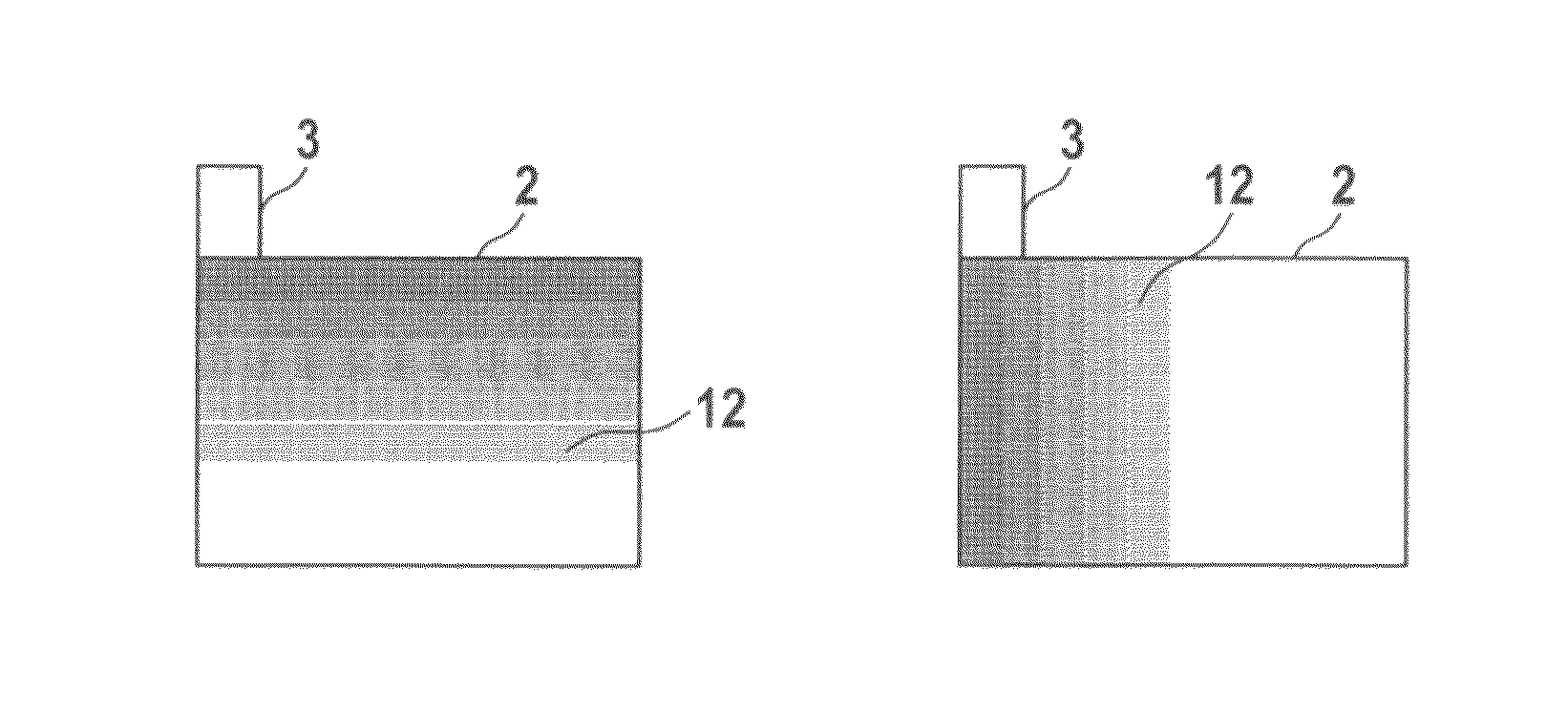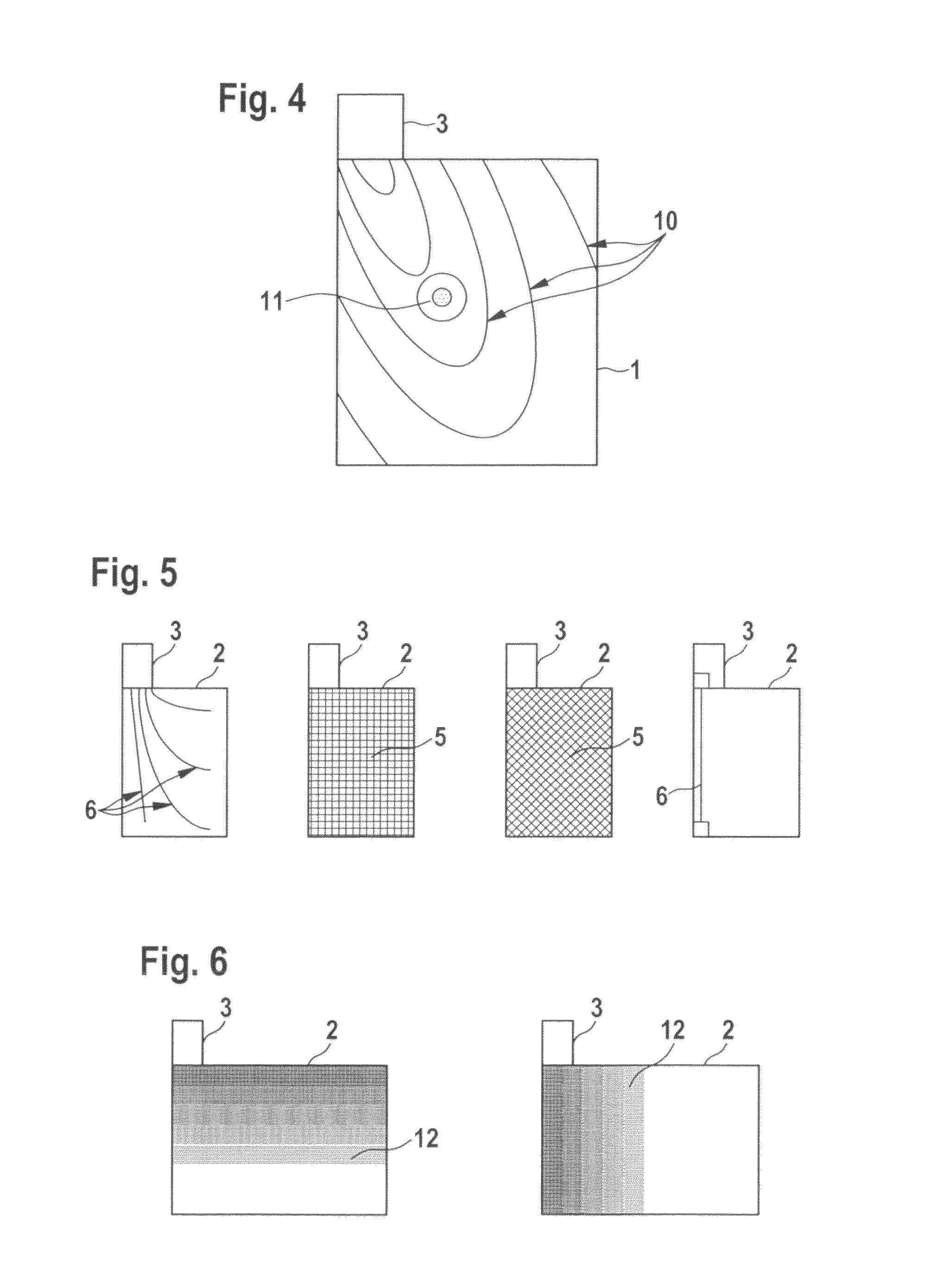Collection structure in batteries
a collection structure and battery technology, applied in the direction of cell components, final product manufacturing, sustainable manufacturing/processing, etc., can solve the problems of high degree of wiring complexity, high overall system performance, and current generated incrementally in the surface area of the electrode, so as to improve the electrical resistance between the terminal region and a point on the carrier foil. , the effect of reducing the electrical resistan
- Summary
- Abstract
- Description
- Claims
- Application Information
AI Technical Summary
Benefits of technology
Problems solved by technology
Method used
Image
Examples
Embodiment Construction
[0042]FIG. 1 shows the general construction of a battery pack. The battery pack is made up of an anode 1A and a cathode 1K that are separated from one another by a separator 7. Separator 7 acts in electrically insulating fashion, but is permeable to ions. Suitable materials for use as separators 7 are, for example, microporous plastics, or glass-fiber or polyethylene mats. Cathode 1K and anode 1A are constructed from a carrier foil 2 and applied cathode and anode material, respectively. Copper foil, nickel foil, or aluminum foils, for example, can be used as carrier foil 2. Lithium mixed oxides such as Li4Ti5O12, LiCoO2, LiNiO2, LiMn2O4, or lithium iron phosphate (LiFePO4), for example, can be used as cathode material. Graphite-containing pastes, nanocrystalline amorphous silicon, or tin dioxide (SnO2), for example, can be used as anode material. Electrodes 1 have a terminal region 3 which serves as an electrical collector and through which electrical contacting of electrodes 1 to a...
PUM
| Property | Measurement | Unit |
|---|---|---|
| thickness | aaaaa | aaaaa |
| thickness | aaaaa | aaaaa |
| electrically conductive | aaaaa | aaaaa |
Abstract
Description
Claims
Application Information
 Login to View More
Login to View More - R&D
- Intellectual Property
- Life Sciences
- Materials
- Tech Scout
- Unparalleled Data Quality
- Higher Quality Content
- 60% Fewer Hallucinations
Browse by: Latest US Patents, China's latest patents, Technical Efficacy Thesaurus, Application Domain, Technology Topic, Popular Technical Reports.
© 2025 PatSnap. All rights reserved.Legal|Privacy policy|Modern Slavery Act Transparency Statement|Sitemap|About US| Contact US: help@patsnap.com



